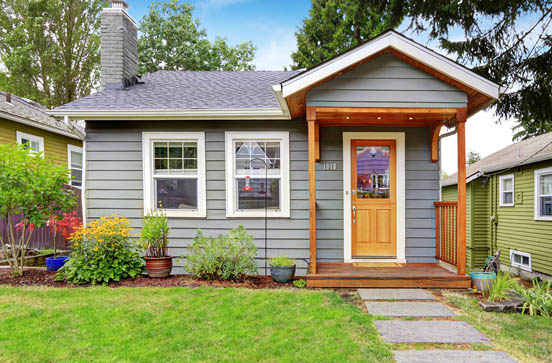What is a Home?
Things That Matter, By Dennis Rizzo
We were able to rapidly construct solid homes for people following World War II. The conditions were different in terms of wages and costs. But the resulting buildings remain standing today, seventy to eighty years later.
Ontario (and much of North America) is in a housing crisis because demand far exceeds supply and the price of existing housing (rental or purchase) is astronomical as a result. The Canadian Press said banks and mortgage companies continue to show record profits, as are real estate investment firms, especially in hot spots like Toronto and Vancouver. “All of the big six banks reported profits that were up in the quarter from last year (2023). Combined, they made $14.69 billion in net income in the fourth quarter, up from $12.1 billion a year earlier.”
Record profits in banking don’t filter down to affordable mortgages. Though the interest rate is dropping, approvals are as elusive as ever for many families. Resale of mortgages is common practice and cautious bankers prefer to average potential losses by parking their money in large, safe bundles. The result has been that hedge funds, international buyers with cash, and investment traders (REITs)have been in control of the flow of housing and marketplace decisions. We can see this dynamic in the focus on small, unaffordable condos in the GTA designed as quick turn-around investments rather than long-range plans for a community.
But this race to invest appears to be stalling. Empty condos and office space pervade the GTA (24,000 unsold condos in the GTA). And, during the pandemic, buyers moved their homes from the GTA to more remote communities such as Orillia. Of course, the demand exceeded the supply and – you guessed it. If you own a home, you are happy. If you are looking to buy or rent a home, you are out of luck.
Can we solve the housing crisis by reinstating the Multi-Unit Residential Buildings [MURB] policy proposed recently by PM Mark Carney?
There are positives and negatives, as with any corporate or government policy. “A 1981 report by the Canada Mortgage and Housing Corporation titled Tax Expenditures: Housing found that the true beneficiaries of the MURB provision “have been the developer/promoters and investors with high marginal tax rates.” So the program needs to be monitored - something not usually a strong point of our government.
In addition to provincial regulations, municipalities like Toronto may have their own regulations regarding MURBs. These regulations may include building codes, zoning requirements, and occupancy limits. Recent moves to allow four units per building site may be a move in the direction of increase density with a MURB approach (Orillia did just that this month)
Financing a MURB before the proposed reintroduction of federal tax incentives has been tricky. These mortgages typically have higher interest rates than residential mortgages but may provide longer terms and larger loan amounts. Another option would be to partner with other investors to purchase a MURB. This can help spread the financial risk and make the investment more affordable. There are some non-profit housing groups looking into this and it is the basis for residences like the Legion Crest facility in Orillia. It is also the basis for REITs noted in part one.
Despite the risks, the earlier MURB programs resulted in over 500,000 new affordable apartment units being constructed. It seems worth revisiting as one of several approaches to getting housing back in line.

A second might be the idea of Tiny Homes – which is also being suggested as one solution for unhoused persons. There are several variations of this prefab concept, including simple, bunky style buildings that can be constructed in a couple of days by a small crew. These assemble like LEGOs and cost between $20-80,000. [A far cry from the $800,000 for that three story attached townhouse near the lake.]
Prefab construction was applied during the boomer housing process following World War II. It’s not neuroscience and it leads to better construction because of the processes involved. Architect Paul Dowsett, quoted on CBC Radio May 18, 2025, notes “…even though ready-made homes aren’t a new concept, they could be the answer now. We need to be building more housing faster and we need to build it better. Just building more crap houses is not an answer.”
What is prefab? It’s not container housing such as we see going up in Orillia, though that might be one option. It’s not trailer parks, though that might be one iteration. It’s a process by which a house is constructed off site in parts and then assembled, like Lincoln Logs, on your property.
Dowsett notes, “A prefab home is a house or pieces of a house that are made in a factory, then put on a large truck and shipped to their desired destination. Some are built from top to bottom, while others are built into separate pieces, which are then shipped to the location where they can be put together.”
CBC News also points out, “For a country with such a severe shortage of housing, the way Canada builds homes hasn’t changed that much since the country was founded. Workers arrive on site with building materials they assemble piece by piece, a little like how cars were built until Ford invented the assembly line more than a century ago. The federal government is aware more productive methods are needed so it’s pushing for modular construction, where homes are fully or partially assembled in a factory before on-site installation.”
We can see this in the push by the new administration to get prefab housing into the marketplace. Let’s open a discussion on how we might make use of prefab housing and tiny homes to open opportunity for young people, the unhoused, and seniors.
Here are some housing terms found in the Niagara Region Housing Plan.
- Affordable housing: Rental or ownership housing that costs less than 30 per cent of a household’s total annual income
- Community housing: Usually geared toward low income households, it refers to housing that was built or funded under a range of federal, provincial or municipal housing programs and is provided to eligible tenants on the basis of defined need
- Affordable market housing: Rental or ownership housing provided by the market for low and moderate income households
- Attainable market housing: Rental or ownership housing provided by the market for medium income households that may be challenged to access rental and ownership options
- Low income household: A household with annual income (before tax) of up to $29,400, which can afford up to $735 per month for housing costs
- Moderate income household: A household with annual income (before tax) of $29,401 to $52,500, which can afford up to $1,313 per month for housing costs
- Medium income household: A household with annual income (before tax) of $52,501 to $83,900 which can afford up to $2,098 per month for housing costs
(Images Supplied)

Dennis Rizzo joins SUNonline/Orillia as a columnist writing on big issues affecting ordinary Orillians. He is an ex-pat Yank from New Jersey. Orillia, Ontario. Canada is his adopted home, but he has brought along a degree of puckishness and hubris. Dennis spent more than 30 years working in the field of disabilities, with some side trips to marketing and management. He presented and keynoted for many conferences and served on a President’s advisory committee. Dennis is the author of several journal articles and booklets in the field of disabilities and work and five non-fiction books, including “A Brief History of Orillia – Ontario’s Sunshine City.” He recently republished a novel set in 1776 and a mystery set in 1860. He also enjoys sitting in on music sessions around town when he can.




